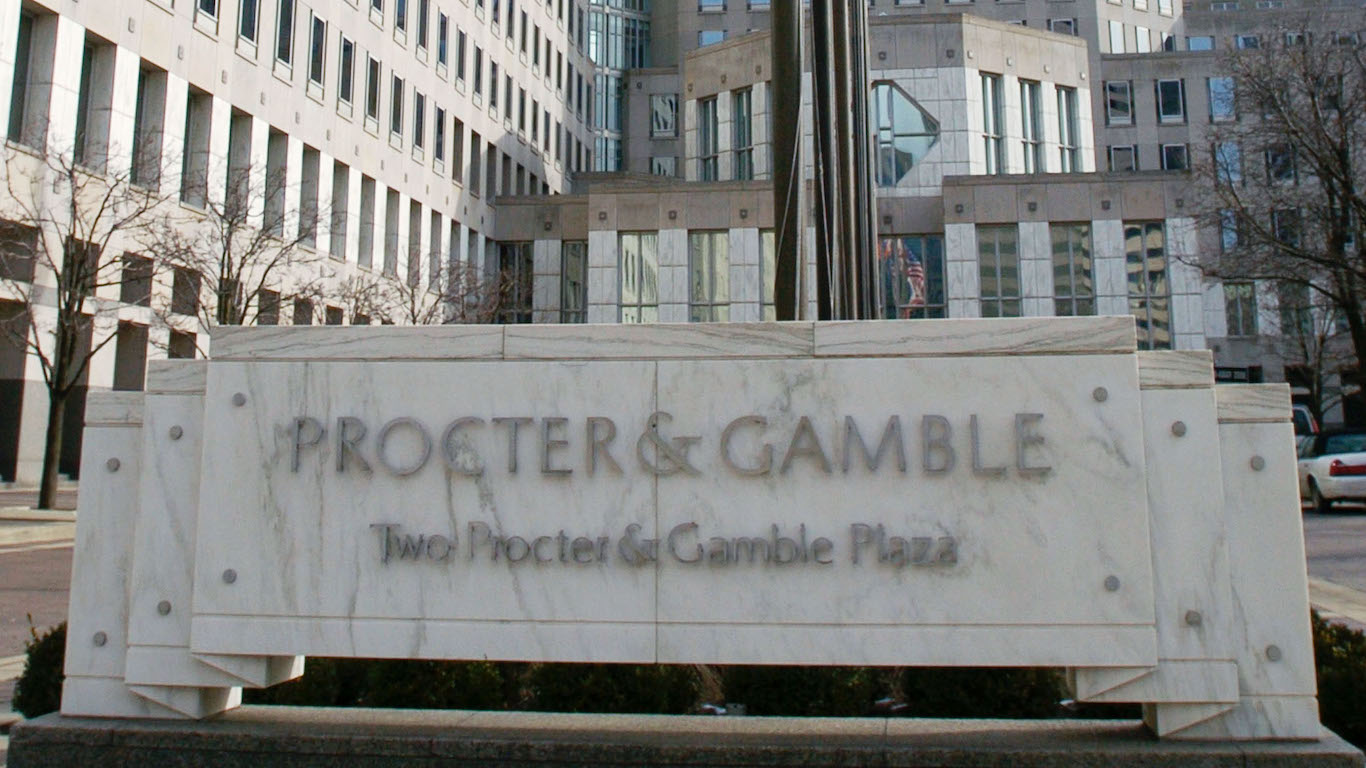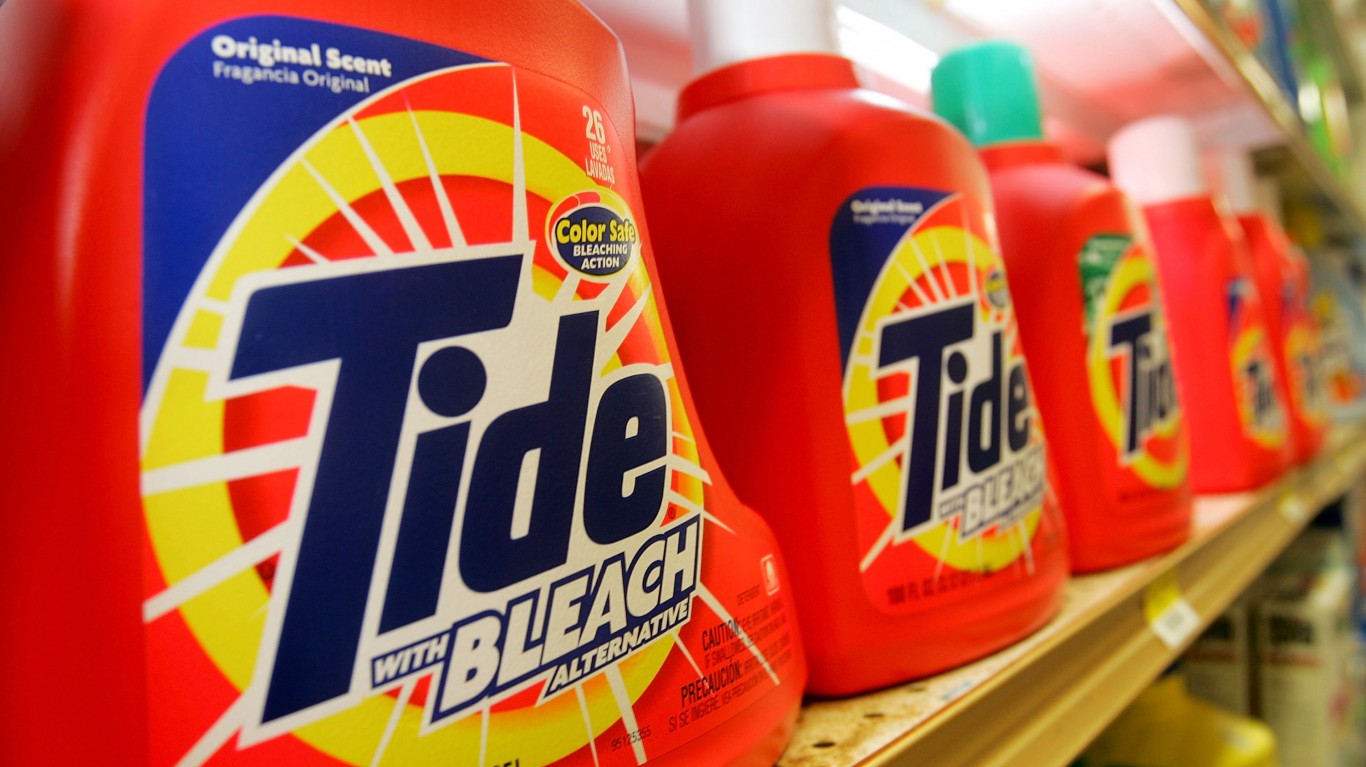Investing
Dividend King Procter & Gamble Just Paid Investors: Here's How Much They Received

Published:

24/7 Wall St. Insights
Procter & Gamble Co. (NYSE: PG) is rewarding its shareholders once again with a quarterly dividend of $1.0065, payable on Friday, Oct. 18. The company’s chief financial officer recently warned that the latest quarter would “not look materially different” from the prior quarter. In fact, the just-posted earnings report fell short of expectations on the top line due to weak demand in China. Still, the dividend payment underscores the management’s commitment to delivering consistent value to investors.

Investors favor dividend stocks for two main reasons. The first is that they offer enticing total return potential. Total return is a comprehensive measure of investment performance that includes interest, capital gains, dividends, and distributions realized over time. In other words, the total return on an investment or a portfolio consists of income and stock appreciation. It is one of the most effective ways to boost the prospects of overall investing success.
Dividend stocks can also provide investors with a steady, reliable stream of passive income. Passive income is money that is earned with little to no ongoing effort, usually from assets that generate cash flow. This income can come from a variety of sources, including stock dividends. Generating passive income is a desirable financial strategy for those seeking to diversify their income streams or achieve financial independence.

Procter & Gamble is the epitome of a stable and dependable stock. It has not only paid out but has increased its dividend annually for 68 years. That makes it Dividend King, a member of that exclusive group of stocks that have at least 50 consecutive years of dividend growth. Only a few Dividend Kings have a longer streak of annual dividend growth.
Since 2005, Procter & Gamble’s dividend has grown over 300%. The current dividend yield is 2.3%, a little better than the average yield of the consumer discretionary sector. The share price has grown by 210% or so since 2005 as well, offering investors some growth along with the income.

Procter & Gamble provides branded consumer packaged goods worldwide. It has many well-known and highly regarded brands, including Head & Shoulders, Old Spice, Gillette, Oral-B, Pepto-Bismol, Tide, Mr. Clean, Pampers, Tampax, and Charmin. It sells its products primarily through mass merchandisers, e-commerce, grocery stores, membership club stores, drug stores, department stores, distributors, wholesalers, specialty beauty stores, pharmacies, and professional channels, as well as directly to consumers.
Its headquarters are in Cincinnati. The company was founded in 1837 by candlemaker William Procter and soap-maker James Gamble. The initial public offering of the current stock was in January of 1978. Major competitors include Colgate-Palmolive Co. (NYSE: CL), Church & Dwight Co. Inc. (NYSE: CHD), and Unilever PLC (NYSE: UL).
Future revenue growth has been a concern for investors and analysts in this time of inflation concerns and economic uncertainty. Yet, the company recently announced the expansion of a facility in Louisiana. It also posted mixed results in the previous quarter. For about a decade now, the company has been trimming its stable of brands to eliminate those that underperform. Since before the pandemic, the number of employees has been increasing, but so have revenues.

The share price has grown almost 47% in the past five years, underperforming the Dow Jones industrial average. Year to date, the stock is up almost 18%, while the Dow is about 14% higher. Shares hit a multiyear high of $177.94 back in September. That’s a little higher than the current mean price target. Post-earnings target changes by analysts could change that picture. D.A. Davidson reiterated its Neutral rating this week. The current cautious consensus Buy rating could change as well.
The stock remains popular with hedge funds, including being a top pick of billionaire Ray Dalio. Institutional investors hold about 69% of the shares. BlackRock, State Street, and Vanguard have notable stakes. About 2.4 million shares, or less than 1% of the float, are held short. Note that some executives recently parted with small batches of shares, and CEO Jon Moeller sold more than $6 million worth of shares back in August.
Stock Splits Do Matter and Here’s What’s Coming Next
The average American spends $17,274 on debit cards a year, and it’s a HUGE mistake. First, debit cards don’t have the same fraud protections as credit cards. Once your money is gone, it’s gone. But more importantly you can actually get something back from this spending every time you swipe.
Issuers are handing out wild bonuses right now. With some you can earn up to 5% back on every purchase. That’s like getting a 5% discount on everything you buy!
Our top pick is kind of hard to imagine. Not only does it pay up to 5% back, it also includes a $200 cash back reward in the first six months, a 0% intro APR, and…. $0 annual fee. It’s quite literally free money for any one that uses a card regularly. Click here to learn more!
Flywheel Publishing has partnered with CardRatings to provide coverage of credit card products. Flywheel Publishing and CardRatings may receive a commission from card issuers.
Thank you for reading! Have some feedback for us?
Contact the 24/7 Wall St. editorial team.